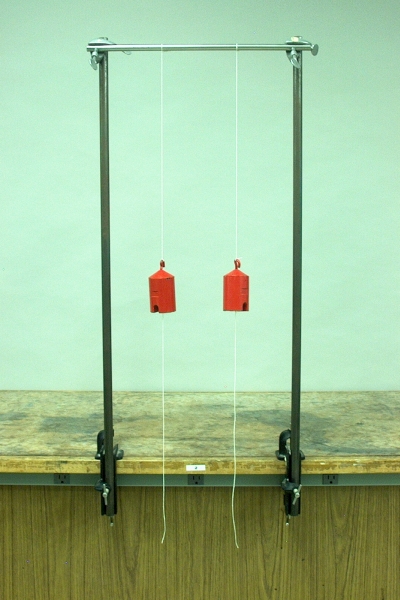
A video of this demonstration is available at this link.
Two one-kilogram masses are suspended as shown in the photograph above. Pull rapidly on the bottom string of one mass, and the bottom string breaks. Pull slowly on the bottom string of the other mass, and the top string breaks.
This is an interesting demonstration, and one for which you can have the class try to predict the outcome. The top string, which holds a 1-kg mass, is, of course, under a tension of 9.8 N. If you pull slowly on the bottom string, as you increase the tension on it, you pull the 1-kg mass downward, and the tension in the top string increases. If you continue slowly to increase the tension in the lower string, the tension in the top string always exceeds it by 9.8 N, and you reach a point where in the top string the tension exceeds the breaking tension of the string, but in the bottom string it does not. At this point, the top string breaks, and the 1-kg mass falls. (Be careful not to leave your hand in the path of the falling mass!)
If, however, you give a quick downward jerk to the bottom string, you exceed the breaking tension in the bottom string in such a short time that, because of the inertia of the 1-kg mass, you cannot accelerate it significantly, and the tension in the top string does not increase significantly above the 9.8 N that it held initially. Therefore, the bottom string breaks, and the 1-kg mass remains hanging from the top string.